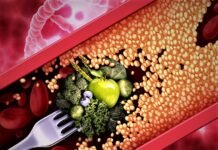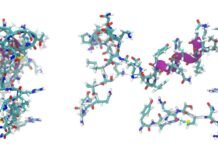The liver is a complex and incredible organ. Everything you put into your body gets broken down and swapped into energy by the liver. It also helps remove toxins from the bloodstream and balances energy metabolism. What’s more, the liver plays a vital role in creating the immune system that serves as a barrier against infections and breaks down red cells that are damaged or broken. It’s clear that the liver is a very important organ in our body. However, when the liver is damaged, these functions can be impaired, leading to serious health problems.
For those concerned about environmental factors contributing to liver damage, you may want to explore more information about potential chemical exposures and their health impacts. Certain industrial contaminants have been linked to liver problems, and understanding these connections can help you make informed decisions about your health and legal options if you’ve been affected by toxic substances.
Liver damage can occur due to various factors, such as viral infections, alcohol abuse, and exposure to toxins. When the liver is damaged, it can lead to a range of symptoms and complications.
One of the most common causes of liver damage is alcohol abuse. Excessive alcohol consumption can cause inflammation and scarring of the liver, which can lead to liver disease. Alcohol-related liver damage can range from mild inflammation to more severe conditions such as cirrhosis, where the liver is permanently damaged and can no longer function properly.
Another common cause of liver damage is viral hepatitis. There are several types of viral hepatitis, including hepatitis A, B, and C. These viruses can cause inflammation of the liver, leading to liver damage and scarring. Chronic hepatitis B and C infections can lead to more severe liver damage, including cirrhosis and liver cancer.
Other causes of liver damage include exposure to toxins, such as chemicals and drugs, autoimmune diseases, and genetic disorders. In some cases, liver damage can also occur due to an unhealthy diet and lifestyle, such as consuming a high-fat diet, being overweight or obese, and not getting enough exercise.
Complications of liver damage can also be serious and can include liver failure, liver cancer, and an increased risk of infections. In some cases, liver damage can be life-threatening and may require urgent medical attention.
Diagnosis of liver damage typically involves a physical exam, blood tests, and imaging tests, such as ultrasound and CT scans. In some cases, a liver biopsy may also be performed to assess the extent of liver damage and determine the underlying cause.
However, many health and lifestyle factors contribute to the liver getting damaged. Because our bodies are designed to tell us when there’s something wrong with a particular organ, it is possible to get the proper treatment and catch the problem early on. Below, are five warning signs of potential liver damage to watch out for.
Yellowish skin and eyes along with itchy skin
There’s no doubt that skin and eye problems are some of the most common signs associated with the aging process. However, sometimes, they can signalize an underlying health issue. If you notice your skin and eyes have a more yellowish tone than usual, it might signal liver disease. It occurs due to bilirubin building up in the blood due to its excessive production. The liver’s inability to keep up results in the yellowing of the eyes and the skin (jaundice), and it’s often the earliest sign of liver damage.
These symptoms are often followed by itchy skin – another warning sign. This may lead to an excessive urge to scratch the skin, which may cause irritation as well as infection. As for what causes the urge for scratching, it can be anything from bile duct cancer, bile duct stones, or primary biliary cholangitis.
Frequent bleeding and bruising
Another warning sign of potential liver disease, bruising, and bleeding tends to go unnoticed. However, they are a clear sign of an underlying liver problem, since they signal the inability of blood clotting due to a lack of protein. Like skin itching, bleeding, and bruising can be caused by a range of ailments, which is why they’re easily missed. Still, they are often the symptoms that signalize a liver disease in its early stages.
In that case, it’d be best to schedule a liver ultrasound and remove any doubts. If they go unnoticed, symptoms like these can wreak havoc on the body silently. Only once they’re identified is it possible to prevent the liver disease from taking its toll any further.
Swelling of feet and liver
Another common sign of a damaged liver includes swelling. Now, this swelling is caused by the fluid that tends to build up. Sometimes, the fluid will accumulate in the abdominal cavity, leading to pain in the right side of the abdomen and a swollen belly.
Another sign is when the fluid builds up in the legs, causing the feet to become swollen. Both of these are symptoms of chronic liver disease and signalize the liver’s inability to carry out the tasks the way a healthy liver should.
Nausea and fatigue
Two of the earliest signs of liver damage, nausea, and fatigue are tell-tale signs that the liver isn’t doing its job right. Although they could signal other health conditions, they’re the first symptoms to appear when there’s potential liver damage, along with loss of appetite, stomach ache, and diarrhea.
If nausea and fatigue are not addressed, the liver damage will continue to reflect in other physical symptoms that are a direct result of declining liver health.
Vomiting blood and passing bloody stools
A sign of cirrhosis, vomiting blood is typically a result of bleeding varicose veins in the stomach and esophagus. This may also lead to blood ending up in the patient’s stool.
While the symptoms listed above all signal that the liver isn’t functioning properly, vomiting blood and passing bloody stools are dramatic symptoms that occur when the liver damage is severe. As such, they require immediate medical attention and further treatment.
Wrapping up
Liver disease is a serious medical condition that requires medical attention as soon as the symptoms appear. While they aren’t always easy to spot, knowing what warning signs to look for can be of great help.
Treatment of liver damage
Treatment of liver damage depends on the cause and severity of the condition. In cases of mild liver damage, lifestyle changes, such as reducing alcohol consumption, losing weight, and following a healthy diet and exercise routine, may be recommended. In more severe cases, medications and other treatments may be required to manage symptoms and prevent complications.
In some cases, liver damage may be irreversible, and a liver transplant may be required. A liver transplant involves replacing the damaged liver with a healthy liver from a donor.
In conclusion, liver damage is a serious condition that can have a range of causes and can lead to various symptoms and complications. It is essential to take steps to maintain a healthy liver, such as limiting alcohol consumption, eating a healthy diet, and staying physically active. If you experience any symptoms of liver damage, it is important to seek medical attention promptly to prevent further damage and complications.
If you or someone you know are suspecting possible liver damage, don’t hesitate to contact your healthcare provider. Not only will catching it early help prevent further damage, but a quick reaction can be a literal lifesaver at times.























